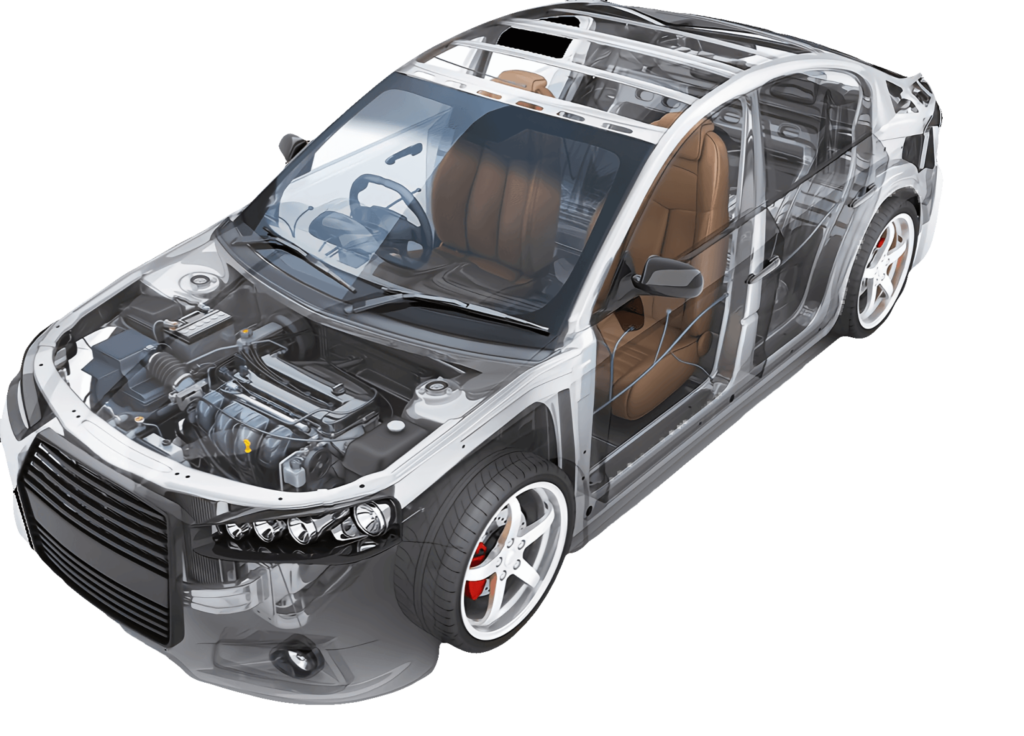Auto parts are various spare parts of motor vehicles and their bodies. A car is generally composed of tens of thousands of parts. According to their nature, auto parts can be divided into engine systems, transmission systems, brake systems, steering systems, travel systems, electrical systems and others. According to different raw materials, auto parts can be divided into metal parts, plastic parts, and electronic parts. Among them, metal parts can be divided into aluminum alloy castings, magnesium alloy castings, zinc alloy castings, and copper alloy castings. Aluminum alloy castings have the advantages of light weight, high specific strength, good corrosion resistance and casting processability, and little restriction on part structure design. They are deeply favored by downstream users. In particular, in recent years, automobile production has shown a trend of lightweight and energy-saving. Aluminum alloy castings have been widely used in the automotive industry.
The upstream of the industrial chain of auto parts is raw materials and design, and the downstream is vehicle manufacturers and service and maintenance organizations.
According to the classification of technological content, auto parts can be roughly divided into the following three categories: high-tech category – engine assembly, automotive instrument and automotive castings, etc.; technological category – gearbox assembly, bumper (large plastic parts), piston engine valve, etc.; general category – high-pressure oil pipe, radiator, brake hose and drive shaft, etc.
Material technology progress is also one of the development directions. Auto parts products in automobile manufacturing plants are composed of different raw materials: steel, plastic, rubber, wood, glass, ceramics, leather, coatings, textiles and chemicals, etc.
With the decision-making and policy of electric vehicles or new energy vehicles on the final use limit, the industry will reflect three major development trends. First, with the electrification of automobiles, the three-electric system replaces the powertrain, and the electronic transmission replaces the mechanical and hydraulic transmission. Second, with the electrification of automobiles, the penetration rate of automotive electronics increases, and the types and number of sensors increase. Third, with the change of automotive electronic architecture, the control core of the parts system is moved to the on-board brain, the design requirements for hardware modules are reduced, and the original overall package supply plan is disintegrated. The old automotive supply chain is relatively stable, and the growth attribute of the parts system is weak but the cyclical attribute is obvious. With the deconstruction and reconstruction of the supply chain system, the customer expansion and product horizontal extension capabilities of excellent suppliers are expected to be strengthened.
In today’s globalized world, as automobile safety regulations become more and more stringent, the technical requirements for safety auxiliary devices are also getting higher and higher: from the initial passive safety device position, such as seat belts, airbags, etc., to the latest active safety auxiliary devices, such as AEB (emergency automatic braking), ESP (body stability system), etc., laws and regulations drive the electronic rate of safety auxiliary devices to increase.
With the increase in battery capacity, energy density, and temperature control requirements of new energy vehicles, the thermal management system of new energy vehicles is constantly innovating. According to different cost and functional requirements, the thermal management system presents a situation of coexistence of simplicity and complexity, which is mainly manifested in the differences in technical routes of battery cooling solutions, heat pump system development, and refrigerant medium breakthroughs.
The valuation methods for auto parts can be selected from the price-earnings ratio valuation method, PEG valuation method, price-to-book ratio valuation method, price-to-cash flow ratio, P/S price-to-sales ratio valuation method, EV/Sales price-to-sales ratio valuation method, RNAV revalued net asset valuation method, EV/EBITDA valuation method, DDM valuation method, DCF cash flow discount valuation method, NAV net asset value valuation method, etc.
The trend of international parts companies is to be all-round, which can gain more stickiness from car companies, but Chinese parts companies are given higher premium valuations due to their huge market and proximity to the market, as well as the investment characteristics of the financial market.
The world’s top parts manufacturers include Germany’s Bosch Group, Germany’s ZF Group, Germany’s Continental Group, Canada’s Magna Group, Japan’s Aisin Seiki Group, Japan’s Denso Corporation, South Korea’s Hyundai Mobis, France’s Faurecia Group, the United States’ Lear Group, France’s Valeo Group (Valeo), Visteon Corporation, NXP Semiconductors, BorgWarner (NYSE: BWA), Weichai Group, etc. The production models of companies in different countries are not the same.


